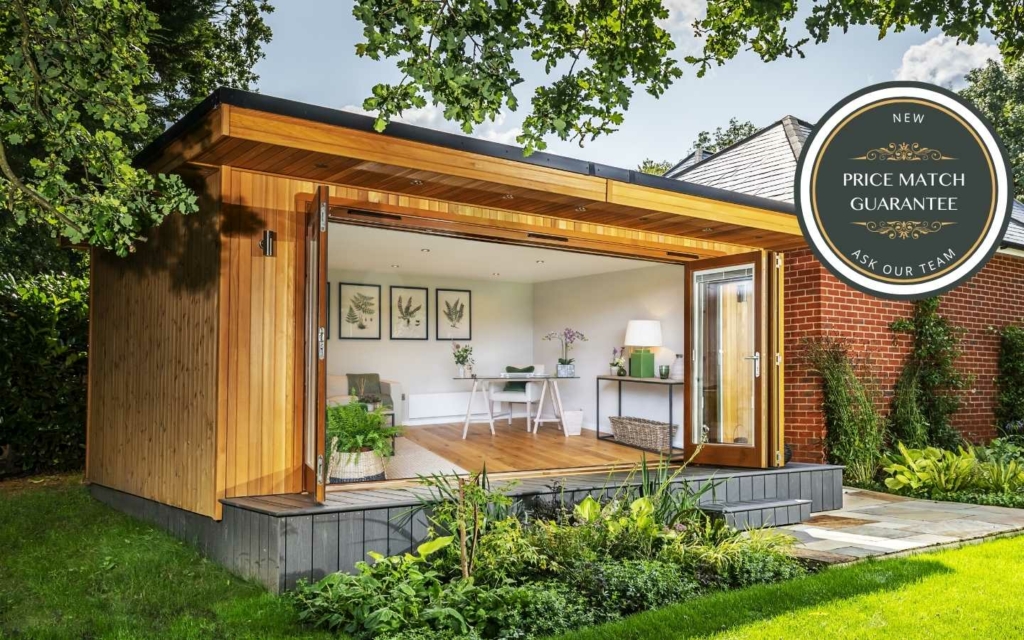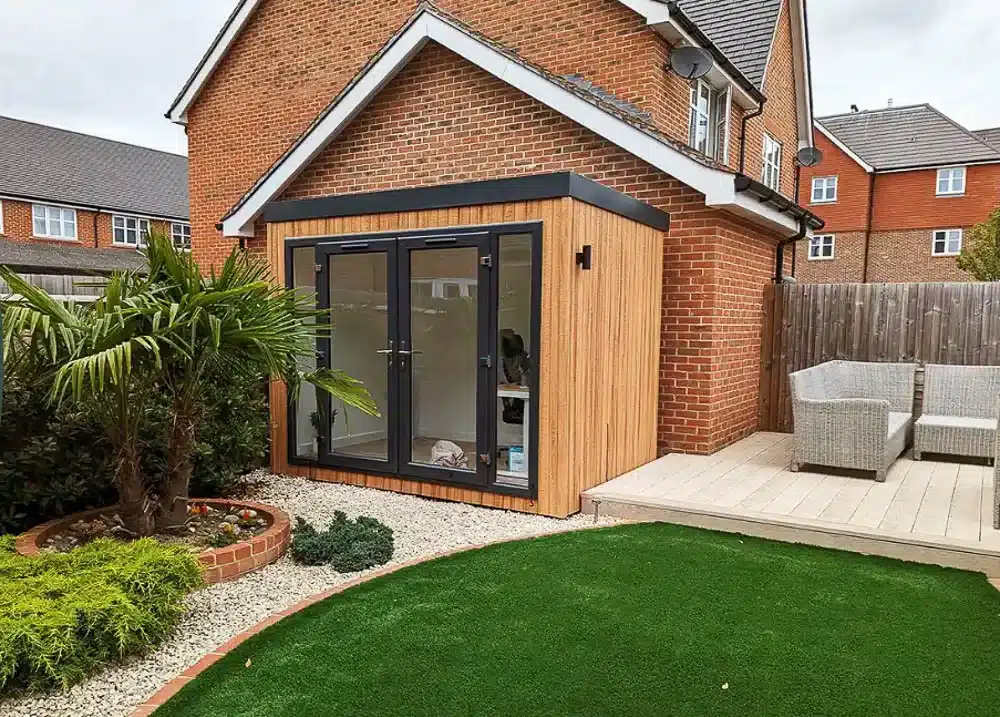Excellent Facts For Planning Permission For Garden Conservatories
Excellent Facts For Planning Permission For Garden Conservatories
Blog Article
What Size Restrictions Do You Have On Gardens, Rooms, Etc.?
Whether you require permission to build of garden offices, conservatories and outhouses as well as gardens is contingent on certain dimensions. Here's a list of the dimensions that may require you to obtain planning permission.
If the outbuilding is detached, permission to plan is usually required when the total area of all the outbuildings that are proposed, as well as any others already existing over half the size of land that surrounds the house (excluding footprint of house).
Height restrictions
Single-story structures. The maximum eaves cannot exceed 2.5 meters.
The height of buildings less than 2 metres away from the property's boundary should not be more than 2.5 metres in height.
Floor Area:
Structures with a floor area greater than 30 square meters could need building regulations approval, even if planning permission isn't necessary.
Distance from boundaries:
If the structure is within 2 meters from the boundary, it is necessary to obtain permission for planning when the structure's height is more than 2.5 meters.
Building Use
Although not strictly a size limit, the function of the gardenroom could affect whether planning permission should be required. If the building's intended use is for residential use or commercial space, then planning permission is likely to be required.
Permitted Development Rights:
In the case of Permitted Development Rights (which permit for some types of work to be carried out without the need for a full planning application), specific size limits and conditions are in place. These rights can vary depending on if the property is in a conservation zone or subject to limitations.
Conservatories and extensions:
The maximum depth of an extension of one story is typically 4 metres in detached houses, and 3 metres in semi-detached or terraced homes. This can be increased by 8 meters for detached homes and by 6 feet for semi-detached or terraced houses, based on the circumstances.
The rear extension on one-story houses can't be higher than 4 metres.
Side Extensions
Side extensions should not be larger than the original house and should not be higher than 4 metres.
Volume Restrictions
In some areas (like conservation areas or Areas of Outstanding Natural Beauty) Any additional structure that increases the volume of the house in more than 10 percent or 50 cubic meters (whichever is greater) could require planning permission.
Front Extensions:
Planning permission might be required for extensions that extend past the front of the house facing the street.
It's important to inquire the local authority for planning since rules can differ according to the local council as well as specific particular property conditions. Building regulations approval might be required even when the planning permission is not required. This could be due to security or structural reasons. Check out the recommended building an office in the garden planning permission for blog examples including outhouses, garden room or extension, garden rooms near me, Tring garden rooms, garden room planning permission, what size garden room without planning permission, out house, garden outhouses, best electric heater for cabin, Tring garden rooms and more.
What Planning Permission Is Required For Garden Rooms, Etc. In Terms Of Neighbourhood Concerns?
The concerns of the neighbors are a key element in determining whether or not planning permission is required for the construction of a garden area or conservatory, outhouse, garden office or extension. Here are a few important factors to take into consideration privacy and overlooking:
Planning permission might be required when the proposed construction may cause a reduction in private space. It is crucial to make sure that the structure is not negatively impact nearby residents.
Loss of Light and Overshadowing:
A permit for planning is generally required if a proposed building is likely to cause significant loss of light or overshadowing of neighboring homes. The local planning authority will consider the impact of sunlight and daylight to adjacent properties.
Noise and Disturbance
Planning permission will be required if a garden area or extension is going to be used for noise-producing activities (such as customers visiting your office at home or a music studio, an office, etc.). This ensures that the noise levels are acceptable and do not disrupt the surrounding neighborhood.
Visual Impact and Character
The style, appearance and dimensions of the new structure must be consistent with the neighborhood's character. Planning approval ensures that the proposed development is visually acceptable and does not detract from the area's aesthetic.
Boundary Proximity
If the structures are higher than 2.5 meters and are less than 2 meters from the property line Then planning permission is required. The reason for this is to avoid any conflicts or impacts to the property adjacent to it.
Shared Access and Rights of Way
It is crucial to seek permission to plan if works will affect shared access routes or rights-of way. This will ensure that they aren't adversely affected or blocked.
Refusals from Neighbors:
The right of consultation with neighbors is a crucial element of the planning process. The planning authority will take into consideration the opinions of neighbors when determining whether or not permission is granted.
Impact on Property Values:
Although it is not always the primary aspect, significant changes that may affect the property values of neighboring homes could affect the need for planning permission. Local authorities will be considering the effects of these changes when making their decision.
Covenants and Deed Restrictions:
There could be covenants or restrictions on the property, which require compliance regardless of planning approval. These agreements could limit the types of structures that can be built, which could impact the peace of the neighborhood.
Construction Disturbance:
The planning permission may be used to address concerns about disturbances that could happen during the construction phase like dust and noise. There may be conditions imposed in order to reduce the impact on neighbours.
Infrastructure Impact:
If the construction puts an additional burden on the local infrastructure (e.g. drainage, parking, and road use) Planning permits will make sure that these effects are analyzed and managed accordingly.
Consultation with the Community
In some instances the need for a larger community consultation may be needed particularly when it comes to more controversial or large-scale development plans. This process allows for a much more democratic and inclusive decision-making.
Summary: Concerns about the neighborhood's surroundings have a significant impact on deciding if it is appropriate to approve permission to designate garden offices and conservatories, outhouses, or extension of the garden. It is important to make sure that the development will not adversely impact on the living conditions of the neighborhood as well as privacy levels as well as sound, light or overall character. Consult with the local authority for planning and involving neighbors earlier during the process of planning can help address these concerns and help facilitate a smoother approval process. Take a look at the best garden room extensions for website tips including how to get power to a garden room, costco garden rooms, garden rooms in St Albans, garden room permitted development, composite summer house, outhouse building, garden room or extension, herts garden rooms, garden office hertfordshire, herts garden rooms and more.
What Kind Of Permit Are Required For Gardens Or Other Structures On Agricultural Land?
If you are planning to construct the conservatory, an office, or an outhouse or if you want to extend your land then you must obtain permission to plan. Here are the key points Change of Use:
Land designated as agriculturally is utilized for farming and similar activities. Its use for gardens or residential uses requires approval for planning. This is because this is a shift from the original agricultural use.
Permitted Development Rights:
Land for agriculture often has distinct rights to development that are not available with residential land. Some agricultural structures, for example, can be constructed with no planning permit. But, these are usually for agricultural structures but not for garden rooms or offices for residential use.
Size and Scale
The proposed dimensions and size of the structure will impact the amount of planning permission required. Planning permission is typically required for large buildings or structures covering a greater area.
The impact on agricultural use
More likely is that planning permission is required when a new structure is disruptive with the use of agricultural the land. For example, reducing the area available for crops or animals.
Green Belt Land:
When land that is used for agriculture is designated Green Belt, additional restrictions are put in place to prevent urban sprawl. Any new construction located on Green Belt land typically requires approval from the planning department and must meet stringent criteria.
Design and Appearance
The style and design of the new structure must be in keeping with the rural character of the surrounding region. The building should not create a negative impression on the landscape.
Environmental Impact:
It is essential to consider the environmental impact before building on an agricultural property. A planning permit may be required to undertake an environmental impact study in order to make sure that the new structure doesn't harm the local ecosystem and wildlife habitats.
Near Existing Buildings
The design requirements could be affected by how close the planned office or garden room is to existing structures for agriculture. Structures that are built close to farm buildings will be treated differently to those on open fields.
Access and Infrastructure
Planning permission will assess whether the existing infrastructure is capable of supporting the new building. The planning permit will decide whether the infrastructure in place can be used to support a new construction.
Use Class Order
The law of planning defines certain categories of land suitable for agricultural purposes. To comply with local regulations and regulations, changing the classes of use to include structures other than agricultural usually requires approval from the planning department.
Local Planning Policies
Local planning authorities have specific policies regarding agriculture-related land. These policies determine whether or not planning approval for non-agricultural structures is granted by taking the local development plans as well as community requirements into consideration.
National Planning Policy Framework
In the UK, National Planning Policy Framework (NPPF) offers guidelines on how land should best be developed and utilized. The planning permission granted for structures built on land that are agricultural will be assessed in light of the NPPF which focuses on sustainable development and the preservation of rural areas.
In the end, planning permission is usually required to build garden rooms, conservatories or outhouses on agricultural land. The need to change land use and comply with national and local planning policies are the main reasons for this. To determine the exact requirements and to get the required approvals, it is essential to consult local planning authorities. Read the top maximum size garden building without planning for more recommendations including ground screws vs concrete base, costco garden room, ground screws vs concrete, outhouses for garden, garden outhouse, garden rooms near me, garden room heater, garden outhouse, garden office hertfordshire, costco garden buildings and more.